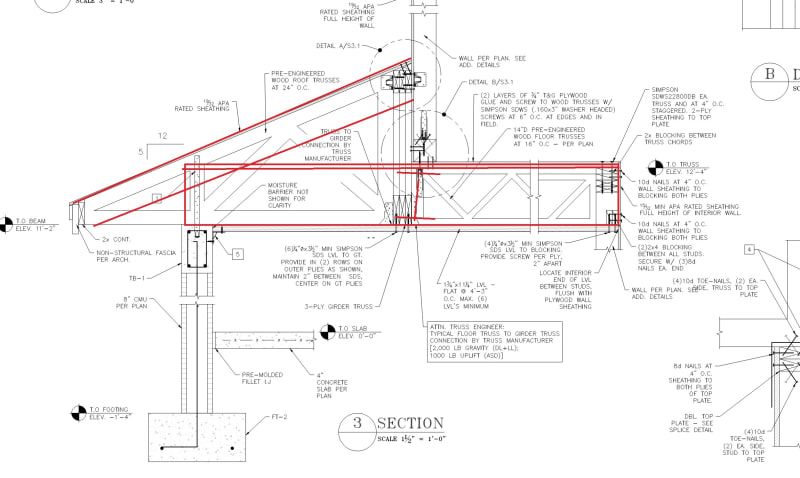struct_eeyore
Structural
- Feb 21, 2017
- 264
I've got this bastard of a condition where a second floor wood frame bearing/shear wall terminates above open space below (see attached pdf). Presently, I've got a girder truss that supports independent floor and roof jack-trusses, and I'm bearing the wall in question on the inside of the GT, right at the tip of the floor trusses. Being unsure of how well this will work, I've also added a series of LVL's underneath, flatwise, secured to the underside of the GT to take any unresolved shear directly to shearwalls on either side.
I'm looking for any and all critique as this is becoming a detailing nightmare - I've been staring at this long enough that I'm not sure I'm missing something. Also looking for suggestions to simplify things, as the carpenters in my area are notorious for not following the drawings.
[URL unfurl="true"]https://res.cloudinary.com/engineering-com/image/upload/v1715118841/tips/truss_wnudfk.pdf[/url]
edit: subject
I'm looking for any and all critique as this is becoming a detailing nightmare - I've been staring at this long enough that I'm not sure I'm missing something. Also looking for suggestions to simplify things, as the carpenters in my area are notorious for not following the drawings.
[URL unfurl="true"]https://res.cloudinary.com/engineering-com/image/upload/v1715118841/tips/truss_wnudfk.pdf[/url]
edit: subject

![[evil] [evil] [evil]](/data/assets/smilies/evil.gif)
